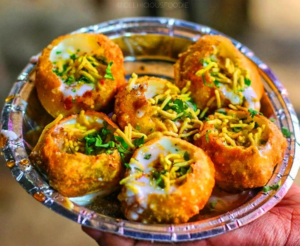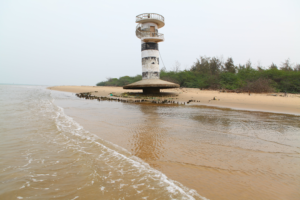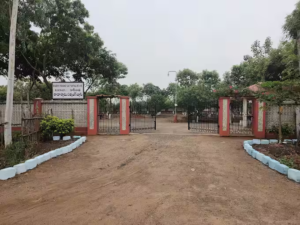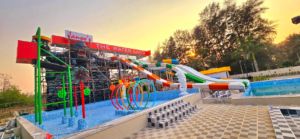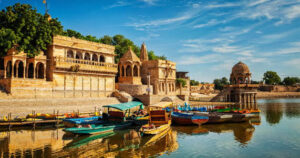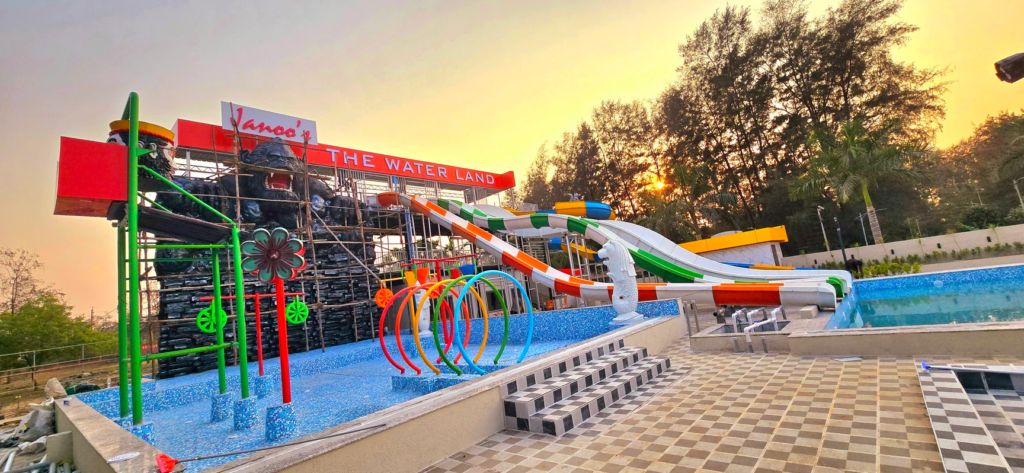Rajasthan, the “Land of Kings,” is a vibrant tapestry of color, culture, and history that beckons travelers from around the world. This northwestern Indian state is home to magnificent forts, opulent palaces, vast deserts, and a rich cultural heritage that captivates visitors at every turn. If you’re planning a trip to this enchanting region, here are the top 10 must-visit destinations that will give you a true taste of Rajasthan’s splendor.
- Jaipur – The Pink City
No visit to Rajasthan is complete without exploring its capital, Jaipur. Known as the “Pink City” due to the distinctive color of its buildings, Jaipur is a feast for the senses. The city’s crown jewel is the Amber Fort, a majestic hilltop palace that offers breathtaking views of the surrounding landscape. Don’t miss the City Palace, a sprawling complex that showcases the best of Rajasthani and Mughal architecture, and houses museums filled with royal artifacts.
The Hawa Mahal, or “Palace of Winds,” is another iconic landmark with its unique honeycomb-like facade designed to allow royal ladies to observe street life without being seen. For a taste of local culture, wander through the bustling bazaars of the old city, where you can find everything from textiles and jewelry to spices and handicrafts.
Jaipur is also home to Jantar Mantar, a UNESCO World Heritage site that houses the world’s largest stone sundial and other astronomical instruments from the 18th century. For a modern touch, visit the Albert Hall Museum, which showcases a diverse collection of artifacts from around the world.
- Udaipur – The City of Lakes
Often called the “Venice of the East,” Udaipur is a romantic city built around a series of artificial lakes. The city’s centerpiece is the Lake Palace, a gleaming white marble structure that seems to float on the waters of Lake Pichola. While now a luxury hotel, it’s still a sight to behold from the shores.
The City Palace, perched on the east bank of Lake Pichola, is a massive complex that houses several palaces built over four centuries. Its museum offers a glimpse into the lavish lifestyle of Rajasthan’s royalty. For a panoramic view of the city, head to the Monsoon Palace, perched high on a hill overlooking Udaipur.
Don’t miss the chance to take a boat ride on Lake Pichola, especially at sunset when the palace lights begin to twinkle. The Jagdish Temple, with its intricate carvings, and the Saheliyon-ki-Bari, a beautiful garden with fountains and kiosks, are other must-visit spots in this enchanting city.
- Jodhpur – The Blue City
Dominated by the imposing Mehrangarh Fort, Jodhpur is known as the “Blue City” due to the azure-painted houses in its old town. The Mehrangarh Fort, perched 400 feet above the city, is one of the largest forts in India and offers stunning views of the blue-hued cityscape below. The fort’s museum houses an impressive collection of palanquins, howdahs, royal cradles, miniatures, musical instruments, costumes, and furniture.
At the foot of the fort lies the Jaswant Thada, a gleaming white marble memorial to Maharaja Jaswant Singh II. Its intricate carvings and peaceful setting make it a must-visit site. For a glimpse into royal life, visit the Umaid Bhawan Palace, part of which is still a royal residence while another part has been converted into a luxury hotel and museum.
Explore the narrow lanes of the old city, where you’ll find bustling bazaars selling textiles, spices, and Jodhpur’s famous antiques. Don’t forget to try the local Makhaniya Lassi, a sweet yogurt drink that’s perfect for beating the Rajasthani heat.
- Jaisalmer – The Golden City
Rising from the heart of the Thar Desert, Jaisalmer is a golden sandstone city that looks like it’s straight out of a fairy tale. The Jaisalmer Fort, also known as Sonar Qila (Golden Fort), is the city’s centerpiece and one of the largest fully preserved fortified cities in the world. Unlike most forts in India, Jaisalmer Fort is a living fort, with about a quarter of the city’s population still residing within its walls.
Inside the fort, you’ll find a maze of narrow lanes lined with beautiful Jain temples, havelis (mansions), and shops selling colorful textiles and handicrafts. The Patwon Ki Haveli, a cluster of five havelis, is known for its intricate stonework and grand architecture.
No visit to Jaisalmer is complete without a camel safari in the Thar Desert. Watch the sunset over the rolling sand dunes and spend a night under the stars in a desert camp for an unforgettable experience. The Sam Sand Dunes, about 42 km from Jaisalmer, are particularly popular for this activity.
- Pushkar
Pushkar, a small town in the Ajmer district, is one of the oldest cities in India and a place of great religious significance. The town is built around Pushkar Lake, said to have been created by Lord Brahma himself. The Brahma Temple here is one of the very few dedicated to this deity in the world.
The town comes alive during the annual Pushkar Camel Fair, usually held in November. This vibrant festival sees thousands of camels, horses, and cattle traded, along with a carnival of music, dance, and cultural events. Even outside of the fair season, Pushkar’s ghats (steps leading to the lake) and numerous temples make for a peaceful and spiritually enriching visit.
Don’t miss the sunset aarti (prayer ceremony) at the Varah Ghat, and take time to explore the colorful bazaars around the main street. Pushkar is also famous for its rose cultivation, and rose products make for unique souvenirs.
- Ranthambore National Park
For wildlife enthusiasts, Ranthambore National Park is a must-visit destination in Rajasthan. Once a princely game conserve, it is now one of the largest national parks in northern India and one of the best places in the country to spot tigers in their natural habitat.
Apart from tigers, the park is home to a variety of wildlife including leopards, nilgai, wild boar, sambar, hyena, and sloth bears. The park’s picturesque ruins, including the imposing Ranthambore Fort, add a touch of history to the wildlife experience.
Morning and evening safaris are available, and it’s advisable to book in advance, especially during peak season. The nearby Dastkar Ranthambore project, which supports local artisans, is worth a visit for those interested in handicrafts and sustainable tourism.
- Mount Abu
Mount Abu, Rajasthan’s only hill station, offers a cool retreat from the heat of the desert. Perched high in the Aravalli Range, it surrounds a picturesque lake and is home to a wildlife sanctuary rich in flora and fauna.
The main attraction here is the Dilwara Temples, a complex of exquisitely carved Jain temples dating back to the 11th and 13th centuries. The intricate marble carvings here are considered some of the finest in India. The Nakki Lake, said to have been carved out by gods using their nails, is perfect for boating and picnics.
For panoramic views of the surrounding landscape, head to Guru Shikhar, the highest point in the Aravalli Range. The Mount Abu Wildlife Sanctuary is home to a variety of wildlife, including leopards, sloth bears, and numerous bird species.
- Bikaner
Known for its camel festivals and snack foods, Bikaner is a lesser-visited but equally fascinating Rajasthani city. The Junagarh Fort, built in the 16th century, is one of the few major forts in Rajasthan that was not built on a hilltop. Its sumptuously decorated interiors offer a glimpse into the opulent lifestyle of Rajasthan’s royalty.
The National Research Centre on Camel, popularly known as the Camel Breeding Farm, is a unique attraction where you can learn about these desert animals and even enjoy a camel milk ice cream. The Karni Mata Temple in nearby Deshnok, famous for its thousands of rats considered sacred, is a unique if unusual pilgrimage site.
Don’t leave Bikaner without trying its famous snacks, especially the Bikaneri bhujia, a spicy snack made from moth beans and spices.
- Chittorgarh
Chittorgarh, home to one of the largest forts in India, is a testament to the valor and pride of Rajputana. The Chittorgarh Fort, sprawling over a hill, has a turbulent history of sieges and battles. The fort complex houses several palaces, temples, and towers, each with its own story.
The 37-meter-high Vijay Stambh (Tower of Victory), built to commemorate Rana Kumbha’s victory over the rulers of Malwa and Gujarat, offers panoramic views of the city. The Rani Padmini’s Palace, associated with the legendary beauty Queen Padmini, and the Kirti Stambh (Tower of Fame) are other notable structures within the fort.
The sound and light show at the fort in the evening brings its dramatic history to life and is not to be missed.
- Bundi
Often overlooked by tourists, Bundi is a hidden gem that offers a glimpse into a less touristy side of Rajasthan. The town is known for its stepwells, palaces, and forts. The Taragarh Fort, also known as the ‘Star Fort’, looms over the city and offers panoramic views of the blue-hued old town.
The Garh Palace, at the foot of the Taragarh Fort, is famous for its Chitrashala, a gallery of fine miniature paintings. The Raniji ki Baori, a magnificent stepwell built in 1699, is one of the largest of its kind in Rajasthan.
Bundi’s old town, with its narrow lanes and blue houses, is perfect for aimless wandering and discovering hidden gems. The town is also known for its handmade paper industry, and workshops where you can see the traditional papermaking process are worth a visit.
In conclusion, Rajasthan offers a wealth of experiences that cater to every type of traveler. From the grandeur of its forts and palaces to the serenity of its lakes and deserts, from its rich wildlife to its vibrant culture, Rajasthan is a destination that promises to leave you spellbound. These top 10 destinations offer a comprehensive glimpse into the magic of Rajasthan, but remember, the true beauty of this land lies not just in its sights, but in the warmth of its people and the richness of its traditions. So pack your bags, and get ready for an unforgettable journey through the heart of royal India!

